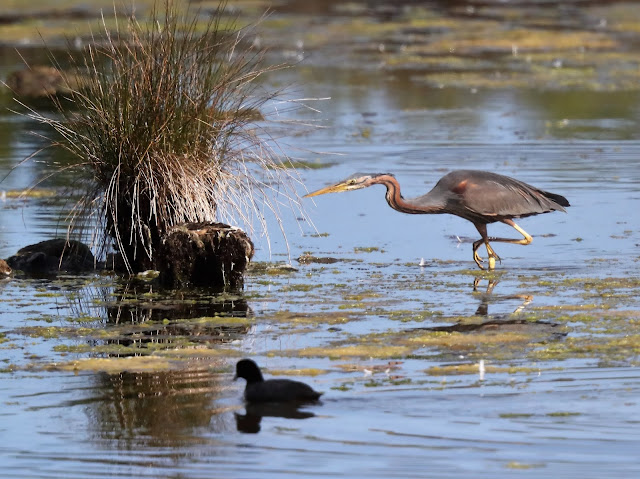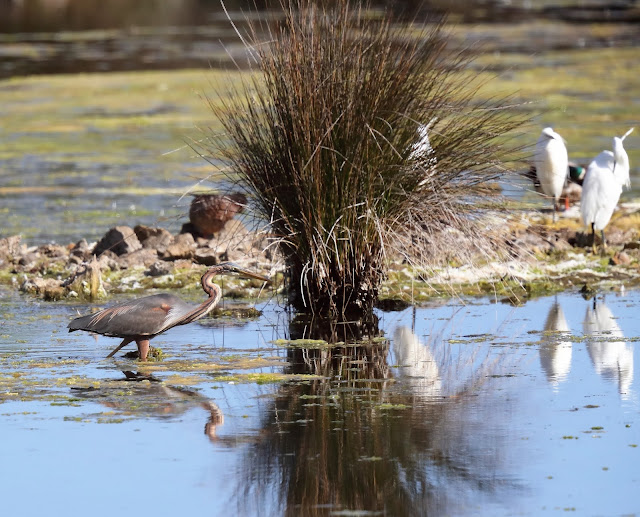Hace unos días volví a visitar las marismas de Santoña con la intención de ver si era posible localizar a alguna garza imperial y poder fotografiarla en sus lances de pesca. El deseo se cumplió sólo en parte ya que sí pude localizarla y fotografiarla, pero lo de los lances de pesca habrá que seguir intentándolo.
La sorpresa inesperada fue la localización del famoso eider de Santoña que hasta ahora se me había estado resistiendo, creo que soy de los pocos asiduos al humedal que todavía no lo había observado. Este es un ave que lleva ya asentado en Santoña varios años y que por alguna razón que se me escapa, prefirió quedarse en las marismas de Santoña, en vez de regresar en otoño a sus lugares de cría en el norte de Europa.
Otra observación típica de las marismas de Santoña son las fochas leucísticas de las que he podido ver distintos ejemplares con diferentes grados de leucismo, pasando del color blanco total hasta otras con predominio del blanco pero salpicadas del negro como el ejemplar que os muestro.
Por último incluyo a un cisne vulgar con sus retoños y a un colimbo grande, que supongo que en breve nos abandonará y regresará a sus lugares de cría en el norte de Europa
eider común (somateria mollissima)
garza imperial (ardea purpurea)
colimbo grande (gavia immer)
focha común (fulica atra)

































Beautiful photos, I never saw the purple heron, the eider I see sometimes in the Netherlands but the most time on holiday in Denmark.
ResponderEliminarThank you Caroline, here we can see the purple heron just in spring and summer, during that period the herons will try to bring forward new generations that guarantee the survival of the species. After that, they come back to Africa
EliminarWhat beautiful photos in this blog.
ResponderEliminarThe eider and the purple heron them I have never seen.
The young mute swans are very cute.
The leucistic coots are also very special, I have never seen this before.
Greetings Irma
Thank you Irma for your kind comments. The presence of the eider at this time in the Santoña marshes is not at all usual, it has been established here for several years without returning to northern Europe and it is something exceptional. Gretings Julio
ResponderEliminarA wonderful series of images, Julio, especially of the leucism in coots, a phenomenon I have witnessed in other species, mainly Turdus thrushes, but never in coots. The junction of water and land is always a very productive area.
ResponderEliminarThank you David, you are right, here too the leucism is more common in turdus thrushes, due to that reason there is a lot of people that go to that place, just to observe these rare coots. Greetings Julio
ResponderEliminar